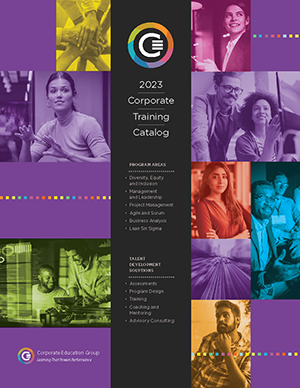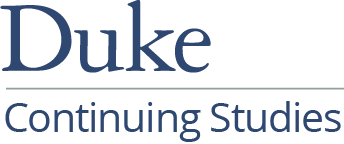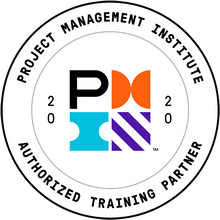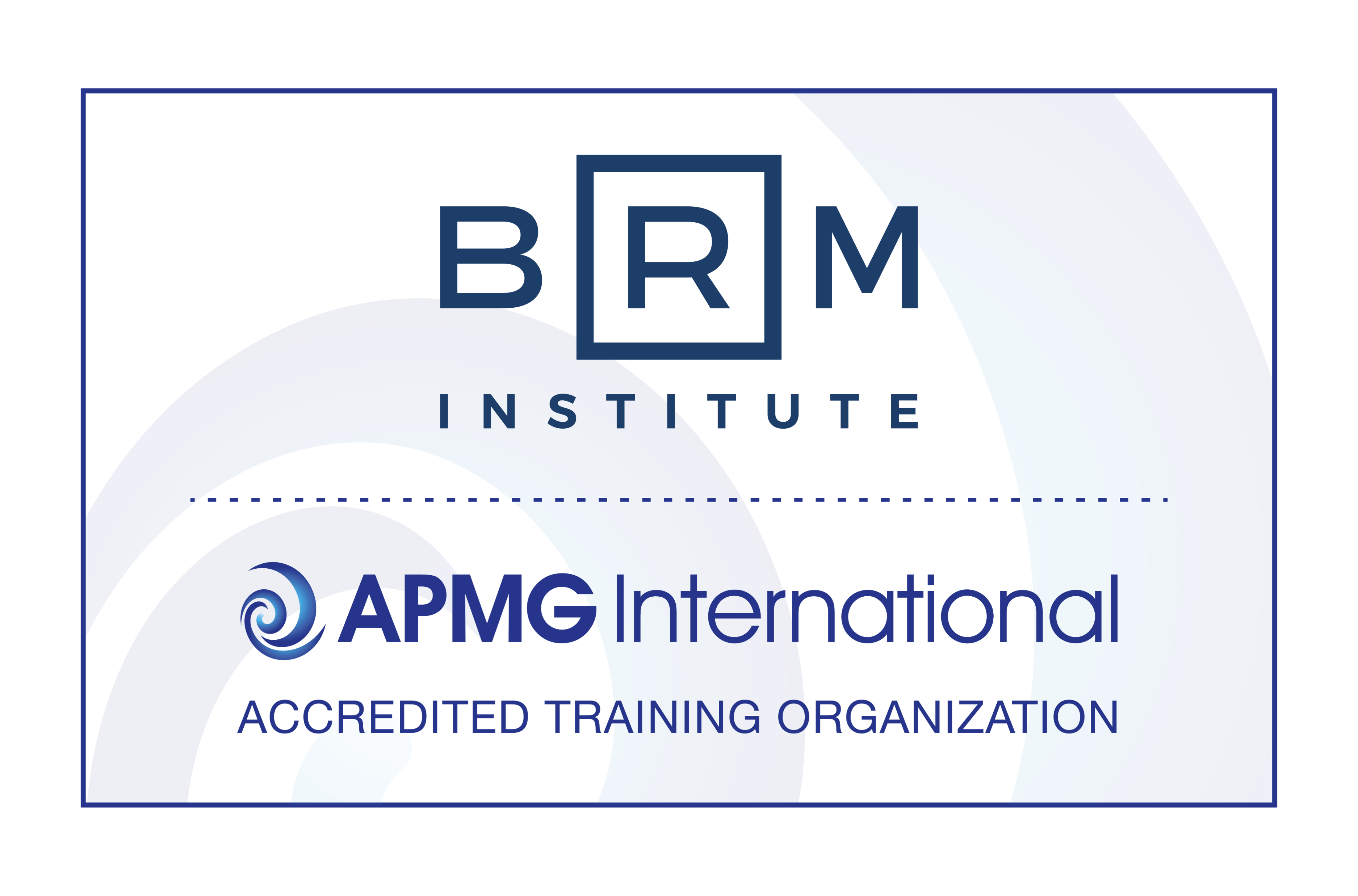Resource Center
- White Papers & Articles
- Career Resources
- Tools, Templates & Checklists
- Webinars & Events
- Client Spotlights
- Industry Spotlights
- Video Library
I Resolve to Be a Better Project Manager... Now What?
By Mark Mullaly, PMP
via ProjectManagement.com 01/22/2013
The  beginning of the year is the time of making resolutions. This is usually followed quite quickly by the breaking of those resolutions. Whether to exercise more, drink less, eat more healthily or give up any number of perceptually bad habits, now is the time of year where we pretend that we can will ourselves into doing something differently than we have so far.
beginning of the year is the time of making resolutions. This is usually followed quite quickly by the breaking of those resolutions. Whether to exercise more, drink less, eat more healthily or give up any number of perceptually bad habits, now is the time of year where we pretend that we can will ourselves into doing something differently than we have so far.
So what if our resolution was to become a better project manager? What then? There is a whole range of changes that this might contemplate. At the same time, there are any number of potential roadblocks that might derail us at the first turn. Doing something different requires defining both what "different" will look like, and determining our strategy for realizing that new way of operating.
In last month's column, I talked about the process of figuring out what we don't already know, and committing ourselves to a path of learning. The other side of that challenge is that once we have acknowledged that we need to change something about ourselves, we need to know how to address it. We still need to be able to define what our new destination looks like, and the steps necessary to get there. Recognizing we have gaps to address is the important first part, but it is only the first part. After that, we need to do something about it.
For more information on this topic, as well as how Corporate Education Group can help optimize your organization's performance, contact us or call 1.800.288.7246 (US only) or +1.978.649.8200.
Resolving to become a better project manager, then, requires four essential steps: recognizing that something needs to change, defining what the change should be, establishing a path forward and committing to the path we have set for ourselves. Every one of these steps is essential for success. Within each also exists the potential for being derailed.

Recognizing the need to change
Acknowledging that we need to change, as we discussed last month, is a challenge on its own. It requires accepting that there is something that we are not good at, or at least that we are not as good at as we would like. It requires allowance that we are "consciously incompetent". While I won't revisit the model that I discussed last month, I will reinforce its usefulness in helping to gauge the degree to which we have mastered a capability, or that there is a capability to master. Taking stock of where we are at — of what is working well, and what we can improve — requires humility and honesty, at least to ourselves. It requires drawing on our experiences to date, and taking out of our experiences what we can improve.
While this sounds relatively straightforward a step, it is actually a quite difficult one. As human beings, we have built-in tendencies to protect ourselves from acknowledging our own inadequacies. The "law of attribution", a fundamental principle of social psychology, states that we tend to view successes as the result of our personal capabilities, while we ascribe failures to external factors and constraints that are beyond our control. When we do run into an opportunity for improvement, therefore, we are far more likely to place blame externally than to acknowledge a need for our own improvement. If we are going to identify potential opportunities for improvement, we first need to shift our perspective regarding previous challenges, and honestly explore how we may have contributed to things not working as well as they did.
For more information on this topic, as well as how Corporate Education Group can help optimize your organization's performance, contact us or call 1.800.288.7246 (US only) or +1.978.649.8200.
Defining the change
Once we can be clear about where we have to improve, the next stage of the challenge lies in defining what improvement looks like. If we were to meet our improved self in the future, what would we look like? What would we be doing differently then? What capabilities would we have in the future that we are currently lacking? Making these judgments is critical, but critically making these judgments is hard.
Often times, the way we identify improvements is by modeling the behaviors and capabilities of others. We see attributes in others that we admire, and we desire them for ourselves. We identify abilities in a colleague, a mentor or a competitor that we respect, and we want them for ourselves. Worse, the skills that we see in others that we envy often seem to come so naturally and easily to them, but feel completely alien to us.
Simply modeling the behaviors of others is, in my experience, inherently dangerous — although it has taken me a very long time to come to that realization. Early in my career as a consultant, for example, I found myself working with a customer who had an astonishing attention to detail. He was extremely particular about how information was presented, and the facts, data and arguments that supported that information. If you couldn't substantiate your facts in a conversation with him, you were dead in the water. Particularly offensive were errors in spelling, grammar and punctuation — in his view, errors in writing indicated errors in judgment, and weak spelling was the sign of a weak mind.
The consequence of working with him, which was only over a period of a few months, was that I became hyper-critical and hyper-attentive to every detail I put together and every document that I wrote. I also became an absolute tyrant about quality, precision and clarity in those who worked for and with me. Perfection was the only standard. And, sadly, perfection was unattainable. I was hard on myself, and I was even harder on others. Worse, this trait of perfection, which I theoretically admired and strove to emulate, was actually contrary to how I function.
My gift is seeing the big picture; I don't deal with details well, and while I value them being attended to, my attending to them requires a level of effort and focus that means doing so shifts me from leveraging a strength to dwelling on a weakness. Attending to the details quite literally means losing sight of the forest in favor of attending to the minutiae of the bark on the trees. In doing so, a natural strength became superseded by an unnatural emphasis that was neither easy nor comfortable. Worse, letting go of this and accepting what I am naturally good at and what I need to more appropriately look for as skills and abilities in others is something that has taken literally years to come to terms with.
Coming to terms with our opportunities for improvement therefore requires not only recognizing our deficiencies, but also being honest about whether they are deficiencies that we can (and should) do something about. Not only do we need to be honest about our past failings, but we need enough perspective to assess whether these failings are reasonable for us to address personally, or whether the solution is to identify others who may be able to better provide the capabilities that we lack.
For more information on this topic, as well as how Corporate Education Group can help optimize your organization's performance, contact us or call 1.800.288.7246 (US only) or +1.978.649.8200.
Establishing a path forward
If we can identify what we want to change, and what that change can look like, from there we still need to figure out what to do about it. In essence, we need a plan for realizing how we get from where we are today to where we want to go. Doing so requires evaluating all of the potential paths forward, and choosing those that are most promising.
Sometimes, figuring out the best way forward is the result of trial and error — pursuing a path until it doesn't work, and then choosing a different way forward. What we need to accept as human beings is that this is actually a pretty good strategy. Many of us get frustrated when we try to do something and it doesn't work. It can, in fact, be awfully tempting to take failure as proof that we weren't meant to do something and give up. At the same time, it is entirely unrealistic that every time we pursue a strategy that we are going to be successful.
Failure is a part of learning. If we are going to be successful at learning, we need to admit that part of that success involves failing a number of times first. As Thomas Edison once said, "Results! Why, man, I have gotten a lot of results! I know several thousand things that won't work." While the vision of what was possible remained clear, and the commitment to realizing the vision was retained, umpteen different attempts were made before realizing something that began to look like success.
Much of choosing a path therefore is about simply that: choosing a path. Assess those avenues that are available to you, and choose one. Be critical about how useful the path is. If it isn't reasonably paying dividends, assess why and what to do about it. Be willing to back track and find a different path.
Committing to the path
Committing to the path therefore isn't about committing to a single path. It is about committing to a process of trying many paths until we find one that works. That can happen quickly, and that can also take years. Twenty-something years into my career, I am still findings things that work, and things that I thought were working that were, in reality, long-held delusions that I would have done well to abandon a long time ago. I am not detail oriented, but I have a phenomenal sense of the big picture and how the components interrelate. While I like working with people, I do not want to manage them. I enjoy contributing to team effectiveness, but am often most effective as an advisor to the team, not as a member. If I had been honest about many of these truths years ago, I would have made different decisions and pursued different paths. These would have led to their own, very different, learnings. Even so, those different paths would have had their own frustrations, challenges and failures.
The true implication of resolving to be a better project manager — or a better anything — is that regardless of what choice we make, there will always be paths not chosen. There will always be frustrations to balance out the successes. If I had made different choices earlier in my career, I would unquestionably be in a different place today. Whether that would be a better or worse place is a matter of idle speculation. I would have had different successes, certainly; I would also still have my share of failings to share with you. Success is about choosing. First we must choose to do something, and then we must also choose to recognize when our earlier choices were good ones, or where different choices might now be required.
My path to this point is a result of the choices that I have so far made. My path forward depends upon the choices I make from here. Success, however, is not about showing up and seeing what happens to you. Being better at what we do requires making the choice to be different, defining that difference and taking steps to work toward it. True success is about choosing, doing, evaluating and course-correcting along the way. If you do that, you are driving your career forward. Otherwise, you're just adrift.
For more information on this topic, as well as how Corporate Education Group can help optimize your organization's performance, contact us or call 1.800.288.7246 (US only) or +1.978.649.8200.
Copyright © 2013 ProjectManagement.com. All rights reserved.







